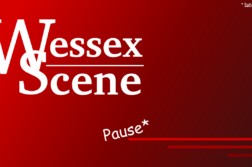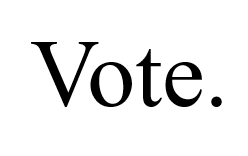Hundreds of people have died since the longstanding conflict between Armenia and Azerbaijan saw its most serious escalation in almost thirty years.
On 27th September, while the world was distracted by the global pandemic, Azerbaijan’s government launched an air and artillery military attack on Artsakh (internationally known as Nagorno-Karabakh), an autonomous region populated and controlled by ethnic Armenians. The conflict over this region is not new and at its core is a dispute between territorial integrity (Azerbaijan’s claim) and the right to self-determination (Artsakh’s claim).
History of the conflict
Nagorno-Karabakh was internationally recognised as part of Azerbaijan when the Soviet Union dissolved. More than 500,000 Azerbaijani residents who used to live in the territory and surrounding areas were forcefully displaced by war. However, in February 1988, the local administration in Artsakh voted in favour of independence from Azerbaijan. Artsakh wanted independence in order to protect its population from eradication – the Armenian population of Nakhichevan and Sumqayit were reduced to almost nothing by the time of the USSR’s collapse, and Artsakh’s independence from Azerbaijan was a preliminary step towards eventual unification with Armenia.
Why the escalation is different this time
The ongoing fighting has already claimed the lives of more than 800 Armenian soldiers (mostly 18-20 year olds carrying out their mandatory military service) and dozens of civilians of Nagorno-Karabakh. Azerbaijan has not released official figures of casualties, but the real figures for both sides are likely to be well into the multiple thousands. Since the war has been rekindled this past month, the civilian capital of Artsakh, Stepanakert, has been under sustained bombardment and continual attack. The local human rights commissioner for the region of Artsakh has said that, so far, more than 70,000 civilians have fled.
In order to understand the specifics of this latest escalation, it is important to look to Baku and Ankara, the capital cities of Azerbaijan and Turkey, respectively. The two cities share close cultural ties, given their shared Turkic heritage. It was Azerbaijani forces that went on the offensive this September, rallied by the active support of Turkish president Recep Tayyip Erdogan in the form of military hardware and Syrian mercenaries. On the other hand, Turkey and Armenia have a deeply strained history, exacerbated by Ankara’s refusal to recognise the 1915 Armenian Genocide during which 1.5 million Armenians died at the hands of the Ottoman empire. Furthermore, though Russia has relations with Armenia’s capital of Yerevan, the tensions over Artsakh have permitted the superpower to maintain leverage over both sides. Armenia hosts a Russian military base and is part of the Moscow-led Eurasian Economy Union. Indeed, for Russian president Vladimir Putin, the outbreak of fighting may also be seen as a useful reminder to Armenia of the indispensability of Russian support. Without Russia’s support, Armenia’s population of just under 3 million pales against Azerbaijan and Turkey’s combined population of over 90 million.
What’s Happening Now
Armenia and Azerbaijan have accused each other of violating the latest ceasefire over the disputed territory, just minutes after it came into effect. The US-brokered ceasefire was announced in Washington on Sunday 25th October. Two other ceasefires agreed earlier this month over the dispute were broken almost immediately. Azerbaijan accused Armenian forces of shelling the town of Terter and therefore violating the ceasefire. Armenia’s defence ministry claim that Azerbaijani artillery had fired after the ceasefire agreement had begun.
Armenian president Armen Sarkissian is headed to Brussels to discuss the conflict with NATO and EU officials, according to his office. Sarkissian expects that NATO and the EU will do anything in order to stop the military aggression of Azerbaijan and NATO member Turkey.
Dozens of celebrities including Ne-Yo, Cardi B, and George Clooney have posted on social media in support of Armenia and expressed the hope for peace to be restored in Nagorno-Karabakh. Others, including Kim Kardashian West, have donated to the Armenia Fund to provide humanitarian aid to those displaced by the war in Nagorno-Karabakh.
The Armenian diaspora in London, Los Angeles, Paris and many more across the globe joined together to protest the actions of the attack on civilian settlements in Artsakh and the Armenian border. The protests have also demanded international media coverage to acknowledge the human rights violations against the ethnic Armenians in Artsakh and inform civilians around the world.
Prime Minister Boris Johnson has not yet made a public comment on the dispute, but Foreign Secretary Dominic Raab and his Canadian counterpart François-Philippe Champagne did release a joint statement, calling for the end of violence in the region, respect for the ceasefire, and the protection of civilians.



